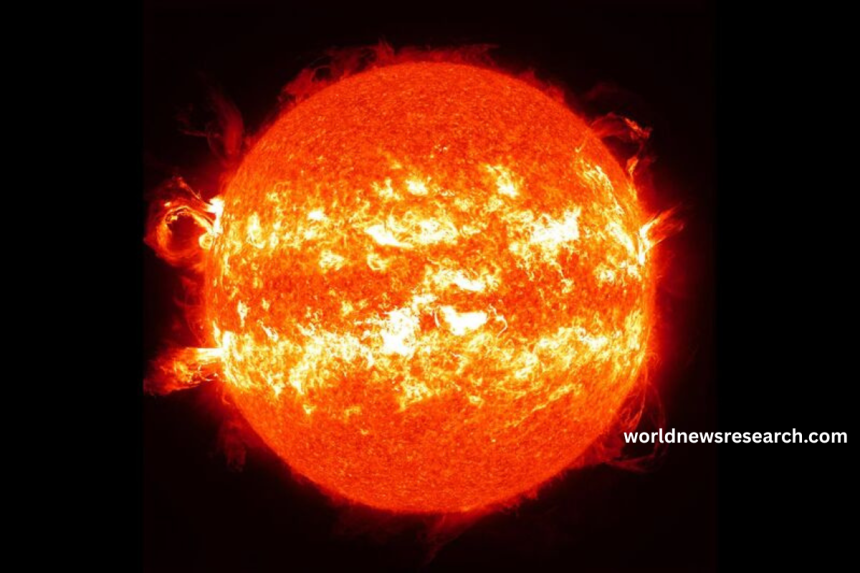The Sun, our star at the center of the solar system, is a dynamic and ever-changing object that influences life on Earth in numerous ways. Its activity is cyclical, with an 11-year sunspot cycle that governs the frequency of solar storms, coronal mass ejections (CMEs), and other forms of solar activity. These phenomena have profound effects on Earth’s space weather, satellite systems, communication infrastructure, and even power grids.
Over the past few decades, solar scientists have noted various anomalies in the Sun’s behavior, leading to predictions that the Sun might be entering a new era of stronger cycles. This shift could have significant implications not just for space weather, but for our technological society as a whole. In this article, we will explore the science behind solar cycles, the potential for stronger 11-year cycles, and the possible consequences of this shift.
Understanding the 11-Year Solar Cycle
The Solar Cycle: An Overview
The Sun’s activity varies in a predictable, approximately 11-year cycle. This cycle is marked by periods of intense solar activity, known as solar maximum, followed by quieter periods, known as solar minimum. During the solar maximum, sunspots, solar flares, and CMEs are at their peak. These phenomena can disrupt communication systems and pose a threat to satellite-based technology and even power grids on Earth.
Solar Flares and Coronal Mass Ejections (CMEs)
Solar flares are sudden bursts of energy that release radiation across the electromagnetic spectrum, including radio waves, visible light, and X-rays. CMEs are massive bursts of solar wind and magnetic fields rising above the solar corona or being released into space. These phenomena can create geomagnetic storms when they reach Earth, disrupting communications, GPS systems, and satellite operations.
Sunspots and Magnetic Activity
Sunspots are darker, cooler areas on the Sun’s surface, caused by intense magnetic activity. The number and distribution of sunspots during a solar cycle are closely monitored as they correlate with the overall level of solar activity. During periods of solar maximum, sunspots are abundant, and the Sun’s magnetic field is at its most intense.
The Mechanics of Solar Cycles
The Solar Dynamo
The Sun’s magnetic field is generated by the movement of electrically charged plasma in the Sun’s interior, a process known as the solar dynamo. This magnetic field flips polarity roughly every 11 years, which marks the transition from one solar cycle to the next. The dynamo process is complex and influenced by various factors, including the Sun’s rotation and the behavior of convection currents in its outer layers.
Solar Cycle Predictions
Predicting the strength and characteristics of each solar cycle is challenging due to the complex nature of the Sun’s dynamics. However, scientists use a combination of sunspot observations, magnetic field data, and advanced models to make predictions about upcoming cycles. In recent years, predictions have suggested that the Sun’s cycles may be increasing in intensity, with some experts speculating that the Sun may be entering a new era of stronger cycles.
Recent Observations: Signs of Stronger Cycles
Solar Cycle 25: A Preliminary Warning
Solar Cycle 25, which began in 2019, is expected to peak around 2025. Early predictions suggested a relatively weak cycle, similar to Solar Cycle 24, which was notably quieter than previous cycles. However, the Sun’s activity has defied these predictions, with the number of sunspots and solar flares being higher than expected. This unexpected uptick in activity has raised concerns that the Sun may be entering a phase of stronger cycles.
Historical Comparison: The Maunder Minimum
To understand the potential for stronger solar cycles, it’s useful to look back at historical data. The Maunder Minimum, which occurred between the late 17th and early 18th centuries, was a period of very low solar activity. During this time, the Sun’s 11-year cycles were almost nonexistent, and there were few sunspots. The opposite extreme—periods of unusually high solar activity—has also occurred in the past, such as during the 20th century’s Solar Cycles 19 and 20.
Solar Cycle 19: A Peak in Activity
Solar Cycle 19, which peaked in 1958, is often cited as the strongest solar cycle in recorded history. During this cycle, sunspot numbers were exceptionally high, and the number of solar flares and CMEs was also greater than usual. Comparing Solar Cycle 19 to more recent cycles can help us understand the potential for future activity.
Why Stronger Solar Cycles Matter
Effects on Earth’s Space Weather
The impact of a stronger solar cycle would be felt on Earth’s space weather. More solar flares and CMEs could result in more frequent and severe geomagnetic storms. These storms can affect satellite communications, GPS systems, and power grids. In extreme cases, large solar storms could cause widespread damage to electrical infrastructure, resulting in blackouts that could last for days or even weeks.
Impact on Communications and Navigation
Satellites in orbit around Earth are particularly vulnerable to the effects of solar activity. Solar flares can interfere with radio communications, especially in high-frequency bands, while CMEs can cause satellite damage and disrupt GPS signals. A stronger solar cycle could increase the frequency of these disruptions, posing a significant challenge to global communication systems.
Power Grid Vulnerabilities
Power grids are also at risk from solar activity. Geomagnetic storms induced by solar flares and CMEs can induce electrical currents in power lines, damaging transformers and other critical components of the grid. In 1989, a major geomagnetic storm caused a widespread power outage in Quebec, Canada. If stronger solar cycles lead to more frequent storms, the risk of such events occurring again could increase.
The Science Behind the Stronger Cycles Theory
Magnetic Field Behavior
One of the main reasons scientists suspect that the Sun may be entering a period of stronger cycles is the observed behavior of the Sun’s magnetic field. The Sun’s magnetic field is thought to be increasing in strength, which could lead to more intense solar activity. This may be due to changes in the solar dynamo process, though the exact mechanisms are still not fully understood.
Sunspot Observations
Recent observations have shown that sunspot activity is rising faster than expected, even during the early phases of Solar Cycle 25. This could signal that future cycles will be more intense than previously predicted. If this trend continues, we may be entering a new phase of stronger solar cycles.
The Influence of Solar Convection
Changes in the convection currents within the Sun’s outer layers could also play a role in the strength of the solar cycle. These currents, which are responsible for the movement of plasma within the Sun, could become more vigorous, leading to stronger magnetic fields and more intense solar activity. This theory is still being studied by solar scientists, and more research is needed to confirm its validity.
Preparing for Stronger Solar Cycles
Advancements in Solar Monitoring
To prepare for stronger solar cycles, it is essential to advance our understanding of the Sun’s behavior. Improved solar monitoring systems, such as the Parker Solar Probe and the Solar and Heliospheric Observatory (SOHO), provide real-time data on solar activity. This information can be used to predict solar flares and CMEs, giving us time to take precautionary measures.
Space Weather Forecasting
Space weather forecasting is another critical area of research. Accurate predictions of solar storms can help mitigate the impact of solar activity on satellites, power grids, and communication systems. Developing better forecasting models will be key to reducing the potential damage from future solar cycles.
Hardening Infrastructure
One of the most important steps in preparing for stronger solar cycles is hardening our infrastructure against space weather events. This includes protecting satellites from radiation, improving the resilience of power grids, and developing more robust communication systems that can withstand solar-induced disruptions.
The Long-Term Implications of Stronger Solar Cycles
Impact on Technological Society
As we become increasingly reliant on technology, the effects of stronger solar cycles could have far-reaching consequences. A major solar storm could disrupt everything from global financial markets to the daily functioning of everyday life. For example, a prolonged power outage could cripple entire cities, while widespread communication disruptions could prevent people from accessing emergency services or critical information.
Climate Considerations
Some researchers have speculated that stronger solar activity could have an indirect impact on Earth’s climate. While the Sun is not the primary driver of climate change, variations in solar output could influence Earth’s temperature. If stronger cycles result in an increase in solar energy reaching Earth, there could be localized warming effects, though the overall impact would likely be minimal compared to human-driven climate change.
Frequently Asked Question
What is the 11-year solar cycle?
The 11-year solar cycle refers to the periodic cycle of solar activity that the Sun undergoes. It is marked by fluctuations in the number of sunspots, solar flares, and coronal mass ejections (CMEs). At the peak of the cycle (solar maximum), the Sun exhibits the highest activity, while at the trough (solar minimum), solar activity is much quieter. This cycle is driven by changes in the Sun’s magnetic field.
What is a solar flare and how does it affect Earth?
A solar flare is a sudden, intense burst of energy from the Sun that can release radiation across the electromagnetic spectrum. This energy can disrupt communication systems, GPS satellites, and power grids. Solar flares are particularly impactful in the high-frequency radio spectrum and can cause temporary radio blackouts in regions of the Earth’s atmosphere.
What are coronal mass ejections (CMEs)?
CMEs are massive eruptions of solar wind and magnetic fields from the Sun’s corona. When these ejections reach Earth, they can cause geomagnetic storms that affect satellite communications, GPS systems, and electrical grids. Large CMEs can potentially induce currents in power lines, damaging transformers and other key electrical infrastructure.
Why might the Sun be entering an era of stronger solar cycles?
Recent observations indicate that the Sun’s activity, particularly sunspot numbers, is higher than expected for Solar Cycle 25. This could suggest the Sun may be entering a new phase of stronger cycles. Changes in the solar dynamo (the process that generates the Sun’s magnetic field) and increased solar magnetic field strength may be factors contributing to stronger solar cycles.
How do scientists predict solar cycles?
Scientists predict solar cycles based on the behavior of sunspots and the Sun’s magnetic field. Observations of sunspot numbers and magnetic field strength help create models for future solar activity. The Sun’s dynamo process, which drives these cycles, is complex, making predictions challenging, but advancements in solar monitoring tools like the Parker Solar Probe help refine these predictions.
What would a stronger solar cycle mean for Earth?
A stronger solar cycle would result in more frequent solar flares and CMEs, leading to stronger geomagnetic storms on Earth. These storms could disrupt satellite communications, GPS systems, and electrical grids. Increased solar activity could also have a greater impact on technological systems, especially those that rely on space-based infrastructure.
How does solar activity impact satellites and communication systems?
Satellites are vulnerable to the radiation and charged particles produced during solar flares and CMEs. These solar events can damage satellite electronics, disrupt communications, and reduce the lifespan of satellites. Geomagnetic storms induced by solar activity can also interfere with satellite-based communication systems and GPS navigation.
Can solar cycles impact Earth’s climate?
While solar cycles do influence Earth’s climate, their effects are relatively small compared to other factors like greenhouse gas emissions. Stronger solar cycles could slightly increase the amount of solar radiation reaching Earth, potentially causing small regional warming effects. However, the primary drivers of climate change are human activities, and solar variations are a secondary influence.
What measures can be taken to prepare for stronger solar cycles?
To prepare for stronger solar cycles, scientists are focusing on improving space weather forecasting, advancing solar monitoring systems, and developing more resilient technological infrastructure. This includes hardening power grids, satellite systems, and communication networks to reduce the impact of solar storms. Early warning systems for solar flares and CMEs can help mitigate disruptions.
What is the worst-case scenario for a major solar storm?
In the worst-case scenario, a large solar storm could cause widespread disruptions to power grids, satellite systems, and communications. A severe geomagnetic storm could induce currents in power lines, damaging transformers and causing blackouts that may last for days or even weeks. Global communication systems could also be severely impacted, especially if a storm hits the Earth’s most vulnerable areas.
How can we protect electrical infrastructure from solar storms?
To protect electrical infrastructure, utilities can install protective devices such as circuit breakers and surge protectors to prevent damage from geomagnetic storms. Grid operators can also implement operational protocols to reduce the load on transformers during solar storms. Additionally, “space weather hardening” techniques involve designing equipment that can better withstand the effects of solar activity.
How often do extreme solar storms occur?
Extreme solar storms are rare but have occurred in the past. The most notable example is the Carrington Event of 1859, which is considered the largest solar storm on record. Such storms occur on a scale of several centuries, but smaller, less intense storms happen more frequently, potentially every 11 years during solar maximum. Solar scientists aim to improve forecasts for these events, though predicting their exact occurrence and intensity remains difficult.
What tools are used to study solar activity?
Scientists use a variety of tools to study solar activity, including solar telescopes like the Solar and Heliospheric Observatory (SOHO), the Parker Solar Probe, and ground-based observatories. These instruments provide real-time data on sunspots, solar flares, CMEs, and the Sun’s magnetic field, enabling scientists to study the Sun’s behavior in detail.
Conclusion
The Sun’s 11-year cycle is a fundamental aspect of our planet’s space weather. As scientists observe rising sunspot activity and increasing solar flare intensity, there is growing concern that we may be entering a new era of stronger solar cycles. This shift could have significant implications for our technological society, from communication disruptions to power grid vulnerabilities. By improving our understanding of solar behavior, advancing space weather forecasting, and hardening our infrastructure, we can better prepare for the challenges posed by stronger solar cycles in the future.






